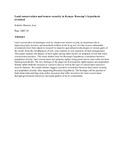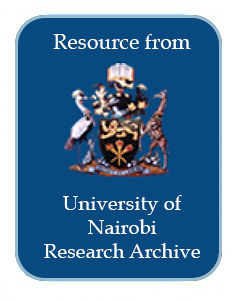Location
Our Vision is to be a world-class university committed to scholarly excellence.
Our Mission is to provide quality university education and training and to embody the aspirations of the Kenyan people and the global community through creation, preservation, integration, transmission and utilization of knowledge.
Core Values
In order to realize the above vision and mission, certain shared values shall be nurtured. There is great need for the University to be guided by the right values derived from the virtues and moral standards of the Kenyan and wider society.
Core Functions
Teaching and Learning: The university offers innovative , relevant and market driven academic programmes , both at undergraduate and postgraduate levels with inbuilt quality control systems the university also provides an environment and policy framework for undertaking high quality and relevant research
Members:
Resources
Displaying 176 - 180 of 298Land conservation and tenure security in Kenya: Boserup's hypothesis revisited
Land conservation technologies used by farmers are known to play an important role in improving farm incomes and household welfare in the long run. For this reason substantial investments have been made in research to improve agricultural technologies in various parts of the world, from the development of new crop varieties to new practices of land management. This paper explores the impact of land rights among other factors on adoption of soil and water conservation practices.
Analysis of the Effect of Land Tenure on Technical Efficiency in Smallholder Crop Production in Kenya
Agriculture is the backbone of the Kenyan economy contributing 26% to GDP and 70% to
employment. Majority of the farmers in Kenya are smallholder farmers possessing less than 3
acres of land. The agricultural sector in Kenya has been facing several challenges among them
declining yields. While the decline in yields could be associated with several other factors, it
could also be as a result of the effect of insecure land tenure systems which are little understood.
This study examines the technical efficiency of alternative land tenure systems among
Social capital and adoption of land and water technologies among smallholder farmers in Kaloleni division, Kilifi district, Kenya
Coastal Kenya is a food deficit area producing only 20 percent of its
food requirement and is referred to as a net importer of food.
However, technologies that can improve food production in the area
exist and continue being developed. These technologies include:
deep tillage, timely planting, use of green manure, animal manure •
and fertilizer application.
Social capital refers to the various social relationships and networks
and the resources that become available thereof. Adoption has to do
Women access to land and its effect on their smallscale agricultural productivity: a case study of maize production in Machakos District, Kenya
Women in most rural communities in Africa dominate farm activities in terms of labour
supply and management. Overall, Africa's performance in terms of agricultural
production and productivity remain inadequate and the region has failed to make progress
in food security (Republic of Kenya, 2002). Therefore, successful agricultural reform
programs will require raising women's productivity. The current study examines the
existence of real evidence that women's limited access to land constitute a significant
barrier to agricultural improvement.
Soil moisture and its consequences under different management in a six year old hedged agroforestry demonstration plot in semi-arid Kenya, for two successive contrasting seasons
Hedged agroforestry (AF) demonstration plots with maize/bean intercrops were studied at Matanya in
Laikipia district, Kenya, between 1991 and 1995 inclusive, to understand crop yield behaviour due to
selected soil moisture conservation methods applicable in semi-arid areas. The treatments were:
Grevillea robusta trees root pruned, compared to unpruned, both in combination with (1) minimum
tillage and mulching with 3t/ha maize stalks harvested from the plots with additional stalks collected




